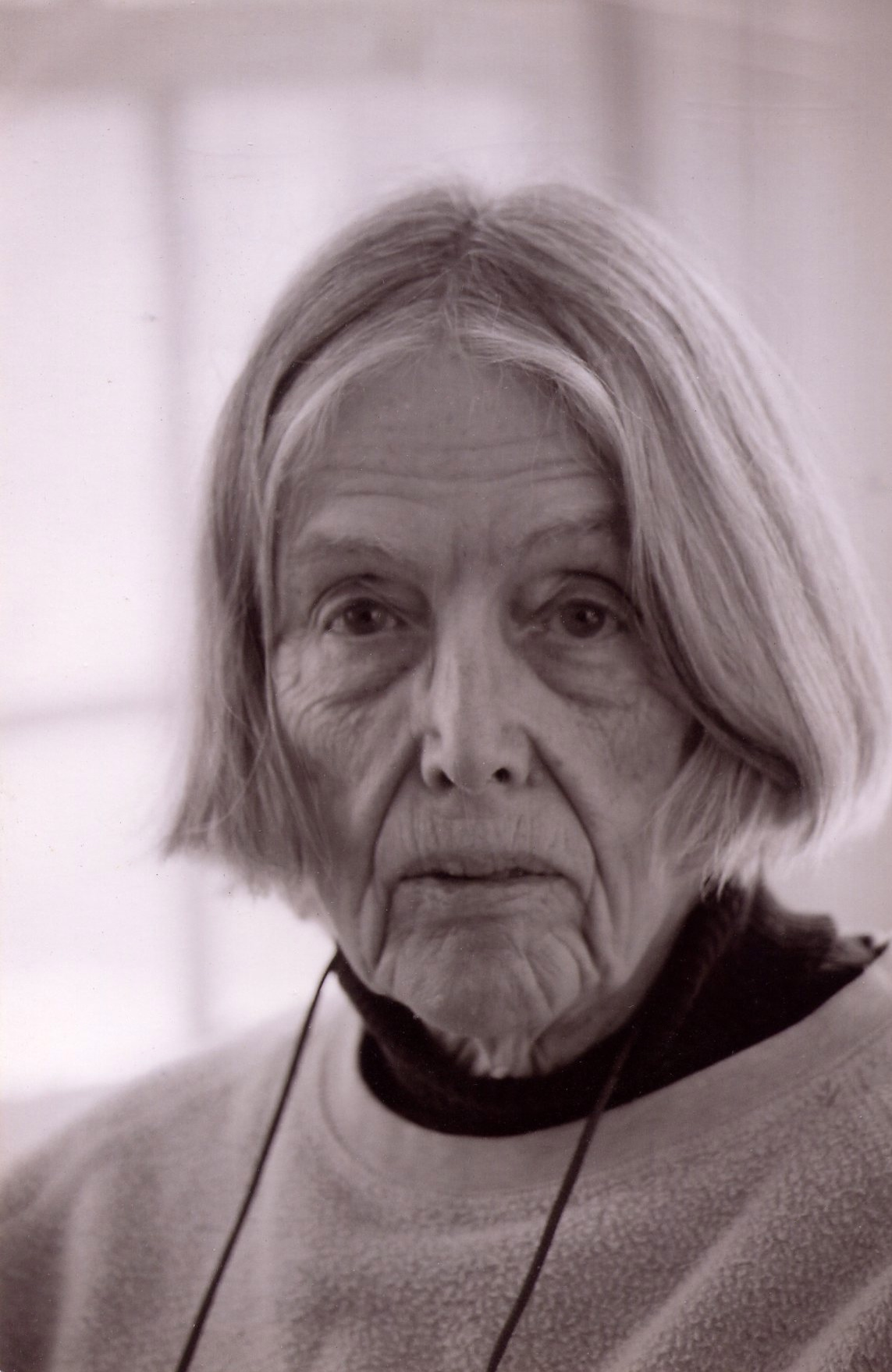About Anne Eaton Parker
Artist’s Statement
Here is the story of my life, insofar as it applies to my work. I was born in Cleveland, Ohio in 1919, a very long time ago. My father, the son and namesake of portrait and landscape painter, Joseph Oriel Eaton (d. 1875 when Father was three years old), used to take us children (I was the youngest of eight) to museums both in Cleveland and wherever we might travel. When I was nine my parents took my sisters, Peggy and Martha, and me to Florence for a stay at a cousin’s villa. (Villa Curonia) Of course they took us to all the museums and churches and palaces. We knew the Uffizi as well as our home. We could have drawn a floor plan and marked where a big proportion of the pictures were. Father was opinionated and a little sentimental, in love with some artists and scornful of others, but never uninterested. Now I most certainly would not agree with him very often, although I share his admiration for Rembrandt, Vermeer and Goya, and his disdain for the saccharin works of Greuze. I am grateful to him both for the museums and for his and Mother’s ever-faithful encouragement of my own efforts. Father used to call an oddly shaped freckle on my shoulder “The Mark of Leonardo Da Vinci.”
As a child I loved to draw and wanted to be an artist. At school, art classes were my favorite. I went to Bennington College and studied with Stefan Hirsch in my freshman and sophomore years, then my last two years with Paul Feeley. Both were great teachers whom I idolized, though I did not emulate their work. After college came the war, which radically changed everyone’s life. I got married, had babies, lived in more places than I can count, and lost dear family members and friends in the war, as did many people of course. My husband Whitney Dodge, was a pilot in the Air Force. After the war we lived in Washington DC, and then Cuba for three years. After Cuba we divorced, and I moved to Williamstown, MA where I married Tony Parker. In 1966 we moved to Martha’s Vineyard, where Tony died in 1985 and where I still live. I have two daughters and one son; my older son (also named Tony) died in 1986. Two of my five stepchildren lived with us for several years. In those days we didn’t know about population explosion.
People often ask me what my paintings mean, but I do not like to “explain” my paintings because the meanings are shifty and I don’t try to fix them. Also I believe that other people’s take on them is often just as valid as my own. A method I’ve used very often is to cover the whole painting surface with one color, then roll crumpled paper over the wet paint to make random shapes. From these shapes I “find” the image, which I go on to clarify and develop, and bring into focus the “found” picture. I also oftentimes make random calligraphic lines with thinned colors, applied with a syringe (an ear syringe makes a beautiful line!) and then proceed as with the crumpled paper marks. Of course, there’s usually a long way and many changes between the beginning and the end. For a while I did pictures of historical characters who interested me, e.g. Henry VIII and some of his wives, Bloody Mary, Queen Elizabeth, Queen Isabella, Juana La Loca, Louis XIV, and also pictures of Kafka and Proust. But most of my paintings are not of real people.
I began making clay figures when my youngest daughter was a child. We made them together (hers were much better than mine). Later I began making bigger figures using papier mache. I worked on these when I got stuck with a painting (even though I always have several paintings going at once.) I think of them as three-dimensional paintings rather than as sculptures.

